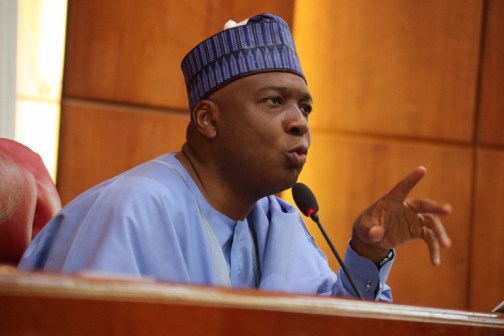2020: IMF ranks Nigeria among 25 world’s richest economies, 1st in Africa

By KEMI KASUMU and agency reports

Investopadea.com, in its “The Top 25 Economies in the World”, gave this ranking as “Ranking the Richest Countries in the World” and Nigeria is number 25 and, by implication, the first and biggest economy in Africa.
Nigeria stands as the number one country in Africa in the International Monetary Fund (IIMF) 2020 World Economic Outlook’s ratings of countries.
Using countries’ GDPs, IMF ranked Nigeria among the first 25 richest countries in the world in the same position with an average 442,976 million U.S. dollars.
Countries are sorted by nominal GDP estimates from financial and statistical institutions, which are calculated at market or government official exchange rates.
Nominal GDP does not take into account differences in the cost of living in different countries, and the results can vary from one year to another based on fluctuations in the exchange rates of the country’s currency.
Such fluctuations may change a country’s ranking from one year to the next, even though they often make little or no difference in the standard of living of its population.
Nigeria had put in place several measures to improve on the economy by tackling various sectors that has direct impact on the lives of its citizens.
The Economic Recovery Growth Plan (ERGP) of the government aims to tackle the key challenges to economic development through tackling constraints to growth and leveraging on the power of the private sector.
It also initiates the promotion of national cohesion and social inclusion, allowing markets to function as well as uphold the core values that define the Nigerian society as enshrined in the 1999 Constitution.
The key principles on which the ERGP stands are focus on tackling constraints to growth; leveraging the power of the private sector and promoting national cohesion and social inclusion
Others are allowing markets to function and upholding core values that define the Nigerian society.
IMF’s 2020 World Economic Outlook ratings.
Rank Country/Territory GDP (US$million)
1. United States 20,807,269
2. China 14,860,775
3. Japan 4,910,580
4. Germany 3,780,553
5. United Kingdom 2,638,296
6. India 2,592,583
7. France 2,551,451
8. Italy 1,848,222
9. Canada 1,600,264
10. South Korea 1,586,786
11. Russia. 1,464,078
12. Brazil 1,363,767
13. Australia 1,334,688
14. Spain 1,247,464
15. Indonesia 1,088,768
16. Mexico 1,040,372
17. Netherlands 886,339
18. Switzerland 707,868
19. Saudi Arabia. 680,897
20. Turkey 649,436
21. Iran 610,662
22. Poland 580,894
23. Sweden 529,054
24. Thailand 509,200
25. Belgium 503,416
26. Nigeria 442,976
Investopadea.com, in its “The Top 25 Economies in the World”, gave this ranking as “Ranking the Richest Countries in the World” and Nigeria is number 25 and, by implication, the first and biggest economy in Africa.
It said, “Gross domestic product (GDP) is an estimate of the total value of finished goods and services produced in a country’s borders during a specified period, usually a year. GDP is popularly used to estimate the size of a country’s economy. GDP is most commonly measured by using the expenditure method, which calculates GDP by adding up spending on new consumer goods, new investment spending, government spending, and the value of net exports (exports minus imports).
“Throughout most of the world, countries’ GDPs fluctuate with the phases of different economic cycles, against a backdrop of longer-term economic growth over time. However, it’s interesting to see that despite these ups and downs, the top economies as measured by GDP don’t budge easily from the positions they hold. When compared to the top 25 economies in 2000, there are only three countries in the top 25, Thailand, Indonesia, and Nigeria, that weren’t there before. That said, there have been some big movers within the list. China and India moved up into second and fifth place respectively, having been in sixth and 13th place in 2000. Further down the list, Indonesia, one of the three aforementioned newcomers to the list, vaulted forward from 27th largest economy in 2000 to 16th in 2019, while Nigeria leapt from 46th place all the way to 25th.
“While 2019 is the most recent annual data available for these countries, the COVID-19 pandemic has had a major impact on economies across the world. Because it has slashed energy prices, cratered tourism, lowered volumes of trade, and shuttered stores due to quarantines, countries have seen record-breaking declines in GDP. While many economies have begun to recover in the third quarter of 2020, most have not yet recovered to pre-pandemic GDP levels. China is a notable exception, and it’s currently on track to be the only major economy to end 2020 with a larger GDP than it started with.
“This article mentions several popular ways to measure GDP, all of which are drawn from the World Bank database:
“Nominal GDP in Current U.S. Dollars: This is the most basic and common way of measuring and comparing GDP between countries, using local prices and currencies converted into U.S. dollars using currency market exchange rates. This is the number that was used to determine the countries’ rankings in the top 25 list.
“Purchasing Power Parity (PPP) Adjusted GDP in Current International Dollars: This is an alternative way of comparing nominal GDP between countries, adjusting currencies based on what basket of goods they could buy in those countries rather than currency exchange rates. This is a way to adjust for the difference in cost of living between different countries.
“GDP Growth: This is the annual percent growth rate of nominal GDP in local prices and currencies, which estimates how fast a country’s economy is growing.
“GDP Per Capita, in Current U.S. Dollars: This is nominal GDP divided by the number of people in a country. GDP per capita measures how much a country’s economy produces per person, rather than in total. This can also act as a very rough measure of income or standard of living for individuals living in a country.
Throughout this list and article, the term GDP refers to nominal GDP in current U.S. dollars unless otherwise specified.
The DEFENDER/Investopadea/NAN









